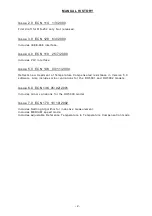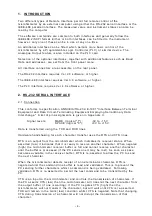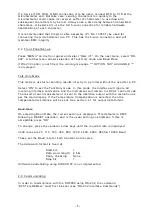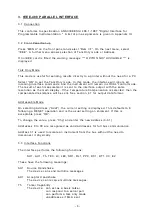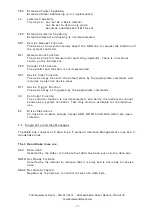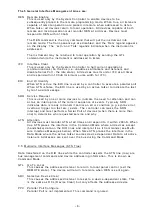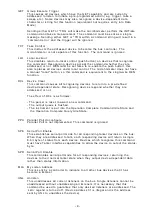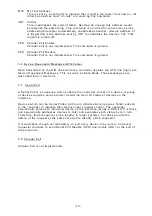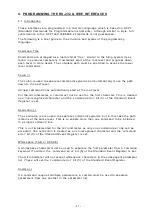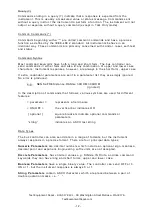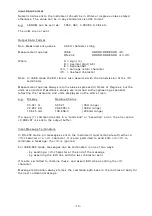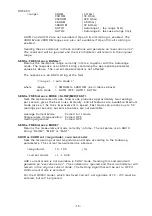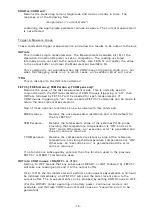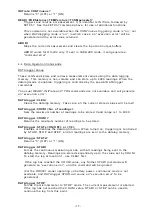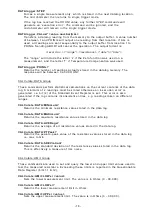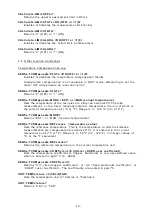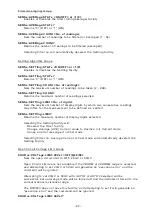
- 5 -
If a 3-wire (TXD, RXD, GND) connection is to be used, connect RTS to CTS at the
microhmmeter end. But take care; sending characters too quickly to the
microhmmeter could cause its receiver buffer (4 characters) to overflow and
subsequent characters may be lost. Always use a time delay between transmitted
characters, or better still, use the fu ll 5-wire connection for reliable hardware
handshaking of each character.
It is recommended that Cropico cable assembly (Pt. No. 100031) be used for
connecting the microhmmeter to a PC. This has the 5-wire connection and will
maintain EMC integrity.
2.2 Front Panel Set-up
Press “MENU” on the front panel and select “Rem I/F”. On the next menu, select “RS-
232”. A further menu allows selection of Talk Only mode and Baud Rate.
If RS-232 option is not fitted, the warning message “** OPTION NOT AVAILABLE **”
is displayed.
Talk Only Mode
This mode is useful for sending results directly to a printer without the need for a PC.
Select “ON” to set the Talk Only mode. In this mode, the interface will ignore all
incoming interface commands, and the instrument will remain in LOCAL control mode.
The result of each measurement is sent to the interface output with the resolution as
per the main display. If the Temperature Compensation is selected, then the
compensated resistance will be sent. See section 4.1 for output data format.
Baud Rate
On selecting Baud Rate, the current setting is displayed. This defaults to 9600
following a RESET operation, and is the usual setting on shipment. If this is
acceptable press “OK”.
To change, press the up/down arrow keys until the required rate is displayed.
Valid rates are 75, 110, 150, 300, 600, 1200, 2400, 4800, 9600 & 19200 Baud.
These set the Baud rate for both transmit and receive.
The data word format is fixed at;
Start bit;
1
Data word length;
8 bits
Parity checking;
None
Stop bit;
1
Software handshaking using XON/XOFF is not implemented.
2.3 Communicating
In order to communicate with the DO5000 using RS-232, the command
“SYSTem:REMote” must first be sent (see “RS-232 Interface Commands”).


